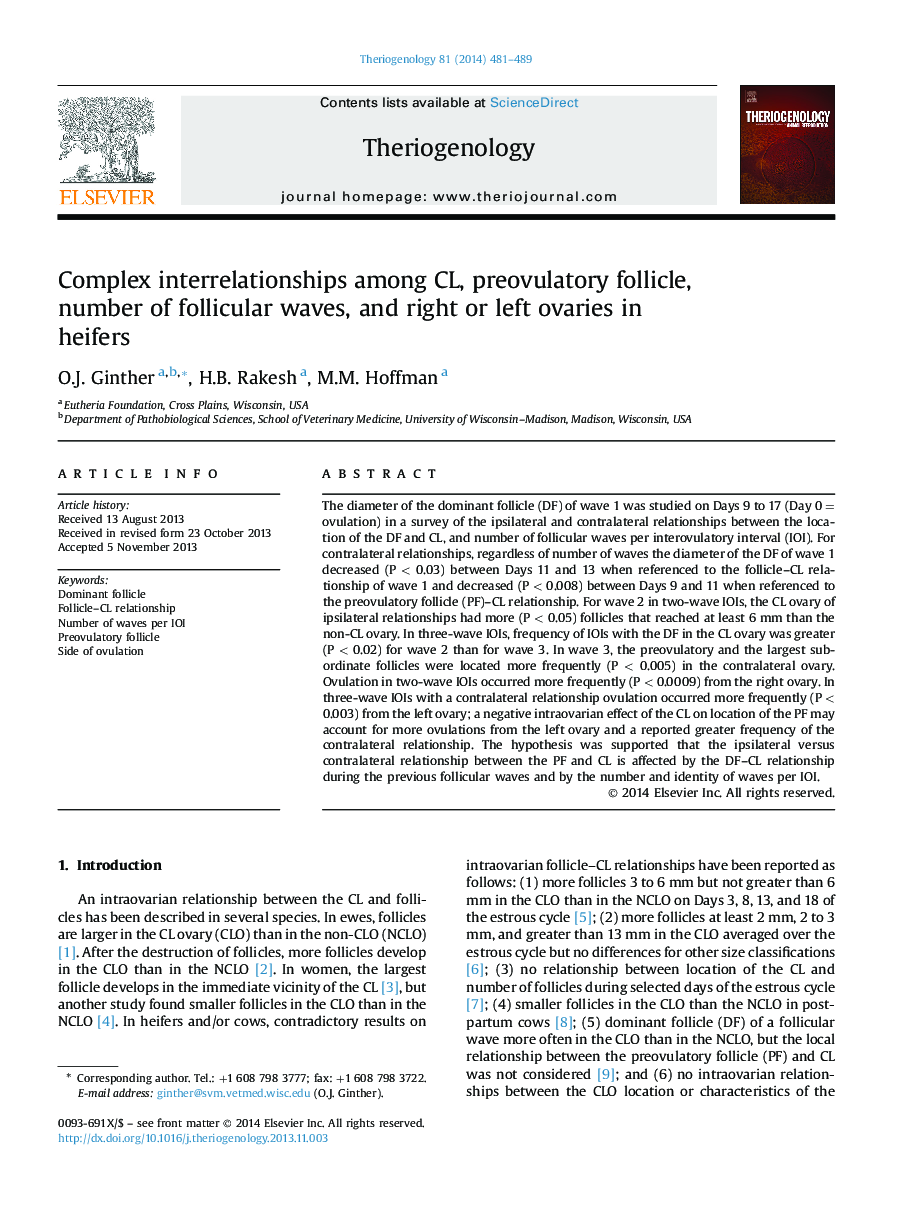| Article ID | Journal | Published Year | Pages | File Type |
|---|---|---|---|---|
| 2097563 | Theriogenology | 2014 | 9 Pages |
The diameter of the dominant follicle (DF) of wave 1 was studied on Days 9 to 17 (Day 0 = ovulation) in a survey of the ipsilateral and contralateral relationships between the location of the DF and CL, and number of follicular waves per interovulatory interval (IOI). For contralateral relationships, regardless of number of waves the diameter of the DF of wave 1 decreased (P < 0.03) between Days 11 and 13 when referenced to the follicle–CL relationship of wave 1 and decreased (P < 0.008) between Days 9 and 11 when referenced to the preovulatory follicle (PF)–CL relationship. For wave 2 in two-wave IOIs, the CL ovary of ipsilateral relationships had more (P < 0.05) follicles that reached at least 6 mm than the non-CL ovary. In three-wave IOIs, frequency of IOIs with the DF in the CL ovary was greater (P < 0.02) for wave 2 than for wave 3. In wave 3, the preovulatory and the largest subordinate follicles were located more frequently (P < 0.005) in the contralateral ovary. Ovulation in two-wave IOIs occurred more frequently (P < 0.0009) from the right ovary. In three-wave IOIs with a contralateral relationship ovulation occurred more frequently (P < 0.003) from the left ovary; a negative intraovarian effect of the CL on location of the PF may account for more ovulations from the left ovary and a reported greater frequency of the contralateral relationship. The hypothesis was supported that the ipsilateral versus contralateral relationship between the PF and CL is affected by the DF–CL relationship during the previous follicular waves and by the number and identity of waves per IOI.
